IMPLANTOLOGY
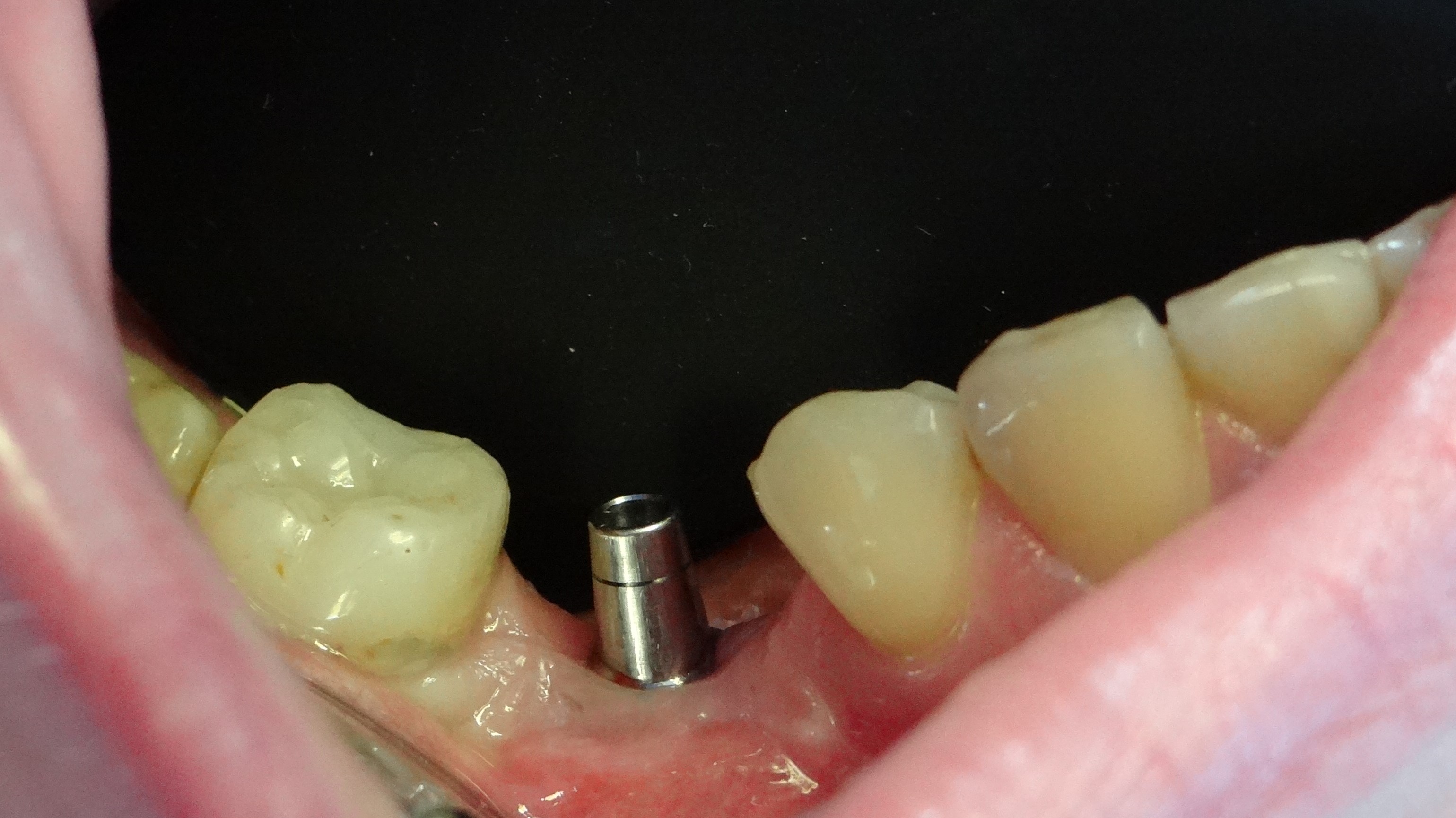
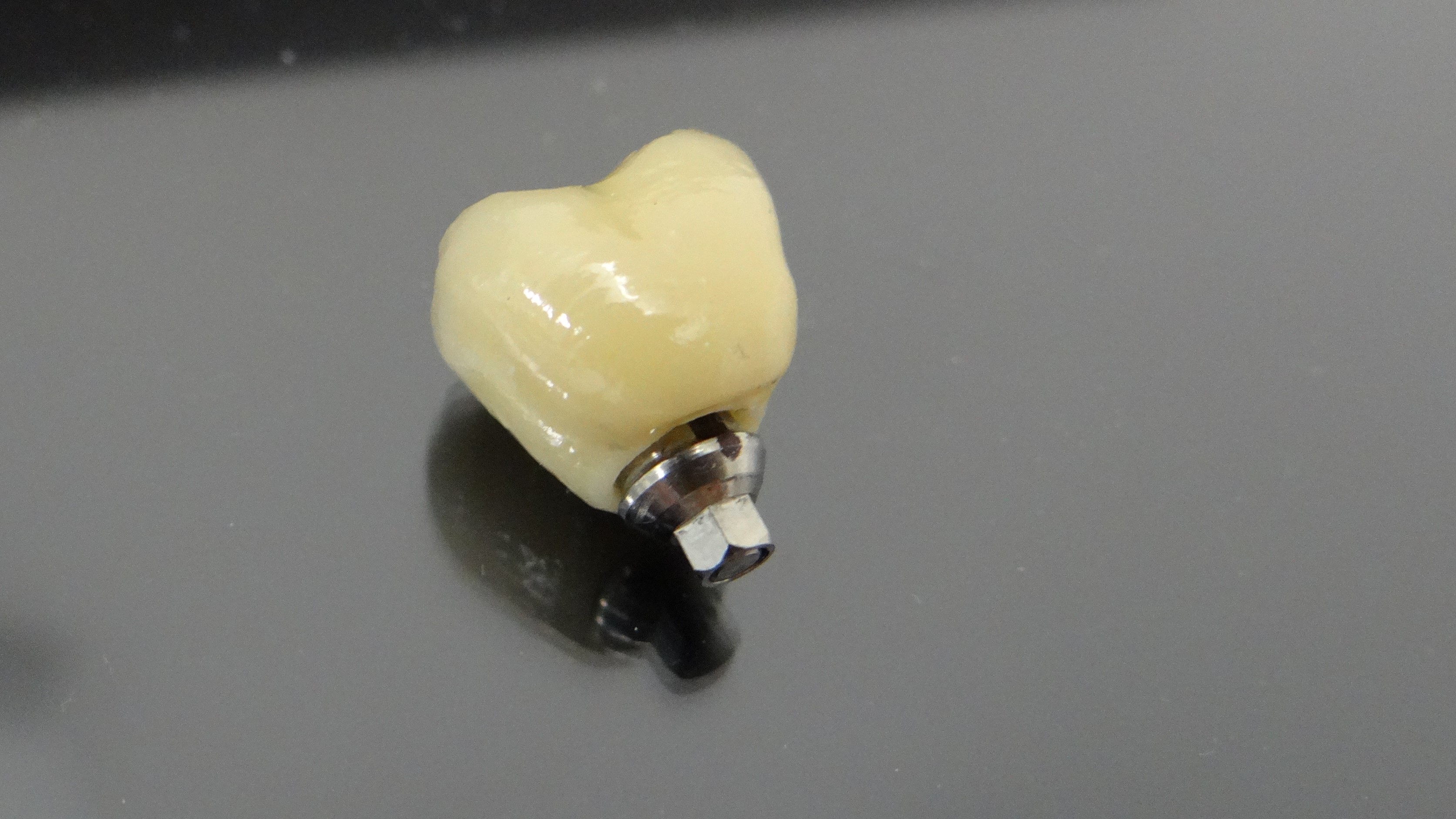
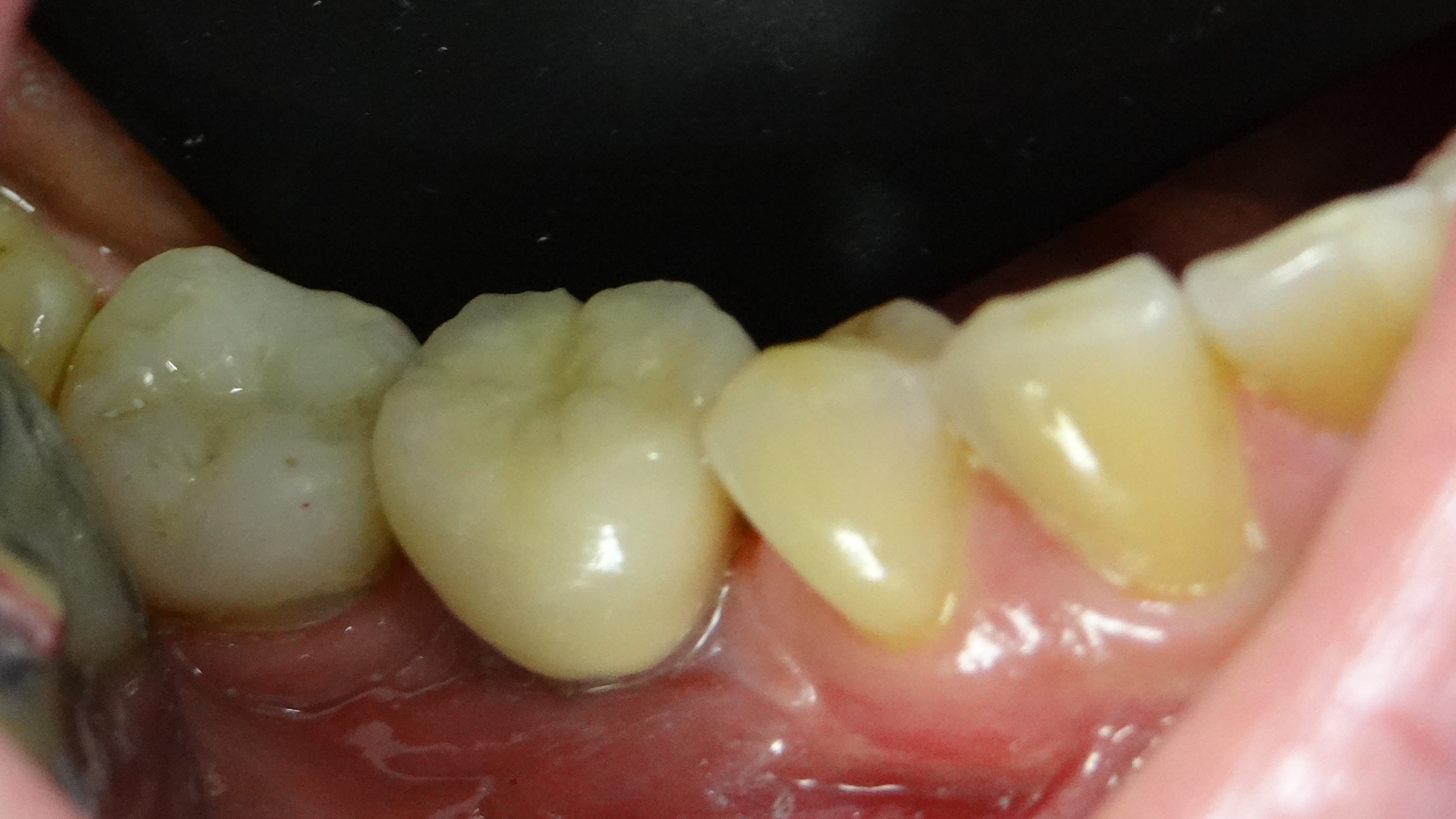
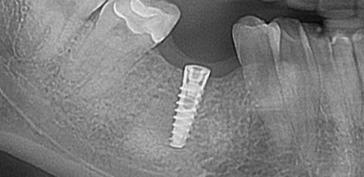
What is dental implantology?
Implantology is a branch of oral surgery that deals with the replacement of one or more missing teeth by installing dental implants.
What are tooth (dental) implants?
Tooth (dental) implants are biocompatible titanium screws which are installed in the upper or lower jaw in a simple surgical procedure under local anaesthesia. The most commonly used dental implants are threaded conical implants. Dental implants replace the missing teeth roots.
What is tooth (dental) abutment?
The abutment or the superstructure of the dental implant is the external part of the implant which allows the restoration of the visible part of the tooth. The prosthetic restoration is cemented on or screwed into the abutment, which is attached to the implant in the bone with the implant screw. Depending on the situation, i.e. the number of the missing teeth, the prosthetic restoration can be: a dental crown, bridge or denture. In the case of one missing tooth, for instance, the final prosthetic reconstruction on a dental implant consists of three parts:
- Implant (a titanium screw installed in the jaw bone)
- Abutment (the external part of the implant which replaces the core of the tooth crown, and which can be metal or zirconium)
- Crown (cap, which can be metal-ceramic or zirconium)
There are temporary and permanent abutments, both of which can come in different shapes, depending on the needs of the prosthetic work. Permanent abutments are screwed into the implant (via the thread) after the period of osseointegration has finished.
What is osseointegration?
Osseointegration is a period which starts with the placement of the dental implant and ends with the implant reaching the ability to withstand chewing forces. This time period is necessary for the implant to become adequately integrated with the surrounding bone it has been placed in and most often lasts 3-6 months, depending on the conditions at the time of the implant placement. Once this time period is finished, the implant can be “uncovered” and the restorative phase can start.
What causes tooth loss?
The main reasons for tooth loss nowadays include untreated tooth decay (and consequently, pulp inflammation and deterioration), periodontal diseases, trauma, etc…
Whatever the reason, the fact is that tooth loss is a functional, aesthetic and health issue for each individual, undoubtedly affecting the quality of their life.
When to opt for dental implants and what is their advantage over dental bridges?
Nowadays dental implants are the perfect solution in cases of one or more missing teeth. Their main advantage over traditional fixed prosthetic solutions, bridges, is they do not require drilling of the adjacent teeth for support, while their advantage over mobile prosthetic devices in the case of multiple missing teeth cannot be emphasized enough.
Are tooth (dental) implants a safe solution?
Titanium dental implants are cone-shaped, biotolerant, do not cause antigen-antibody reaction, are biochemically indifferent and remain unchanged in the bone tissue. The widespread fear of the patient that the implant will not integrate is completely ungrounded and highly unlikely to happen if everything is done in accordance with the rules, with high-quality implants and adequate oral hygiene on the patient’s side.
What if there is not enough bone for dental implants, what is bone augmentation and sinus lift?
In order for dental implants to be placed into the jaw bone, there must be enough jaw bone which has to be uncompromised. If the bone tissue does not satisfy all necessary conditions, a process of bone augmentation is performed. Bone augmentation is a surgical procedure in which, under local anaesthesia, a section of bone from some other part of the body or an artificial bone (BIO-oss) is transplanted into the jawbone to increase its volume. In the upper jaw there is usually not enough bone to place an implant due to the size and position of the maxillary sinus (a bone cavity in the upper jaw). Sinus lift (lifting the floor of maxillary sinus) is an oral surgery procedure, also performed under local anaesthesia, which involves lifting the floor of the sinus cavity and bone augmentation to develop the adequate amount of bone necessary for the transplantation. Both procedures are standard and safe and can be performed before or during the implantation, depending on the bone condition. If they are required before the implantation, the implant installation is usually possible after 4-6 months, since this time period is necessary for developing the bone of adequate thickness and width needed for the implantation.
What are the contraindications for dental implants?
Conditions which temporarily represent contraindications for dental implants include: acute inflammations and pathological changes of oral mucosa, periodontium and bone tissue, pregnancy and breast feeding, age below the age limit (16 years of age, implantation is allowed after the jawbone has fully grown), radiation therapy in the head and neck region, including the time period after the therapy, chemotherapy. Systemic diseases which represent a relative or absolute contraindication for implants include: endocrine pathologies (especially unregulated diabetes, severe osteoporosis), cardiovascular diseases (recent myocardial infarction, prosthetic heart valves), severe chronic kidney and liver diseases, hematopoietic disorders, diseases which require long-term corticosteroid therapy, HIV and other immunodeficiency disorders, some psychotic disorders (psychosis), narcotics addiction, severe alcoholism and smoking more than 20 cigarettes a day. Local relative or absolute conditions which represent a contraindication for dental implants are: bruxism, poor oral hygiene, unfavourable inter-jaw relations, restricted mouth opening, severe alveolar ridge atrophy and large jaw bone defects.
How to replace multiple teeth with dental implants?
In order to replace one or more teeth, it is necessary to install the adequate number of implants to which a dental bridge will be placed after the osseointegration period. Such a bridge, as well as the bridge which is supported by natural teeth, is cemented on the outer parts of the implants (abutments) or attached to abutments via screws, which make it possible to unscrew the bridge as well. Bridges can also be supported by a combination of both implants and natural teeth, although the best solution is to use either drilled teeth or implants for support. In the case of multiple or complete tooth loss, dental implants can also support dentures. The newest solutions applied in cases of complete edentulousness and a lack of jaw bone are ALL-on-4 and ALL-on-6 dental systems.
What is ALL-on-4 and ALL-on-6?
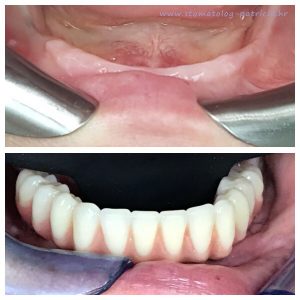
ALL-on-4 and ALL-on-6 are the latest revolutionary concepts in implantology which allow for the fixed prosthetic restoration in cases of completely edentulous patients with insufficient bone. Until very recently, complete dentures were the only possible treatment for such patients. Many of them are not satisfied with their current dentures because of chewing difficulties, or even worse, speaking difficulties which make them avoid contacts and social events. According to the latest Eurobarometer survey on this topic, 1 in 5 patients is affected by this problem!
ALL-on-4 and ALL-on-6 are revolutionary concepts in that they also allow patients to receive their completely functional and aesthetic fixed prosthetic restorations within 12 hours only, following the demands of today’s fast-paced life. They provide a perfect solution to complete edentulousness in just one day. The complete rehabilitation is achieved with only 4 implants (ALL-on-4), 2 of which are straight and 2 angulated, or 4 straight and 2 angulated (ALL-on-6) in order to avoid certain anatomical structures (jaw sinuses) and bone augmentation. Implants are installed according to a special scientifically validated protocol. Following the installation, a temporary screw-retained bridge is made and attached to the implants, which means implants are loaded within 12 hours after their placement. Rehabilitation period is short due to a minimally invasive procedure and no bone augmentation or sinus lift requirements. After the osseintegration period, which lasts for 6 months, a final fixed bridge(fixed teeth)is made.
What is the procedure for installing dental implants?
- Installing dental implants starts with the initial examination and medical history taking which allows for the assessment of the status of Your oral health, Your general health and Your oral hygiene, as well as Your motivation and expectations. Possible destructive habits are also detected (smoking, alcohol), chewing habits, bruxism. The clinical examination includes the extraoral and intraoral examination, with special attention paid to areas in which implantation is planned. Apart from the clinical examination, the analysis of X-rayorthopantomogram and/or CBCT imaging of the alveolar bone is also necessary. After a detailed examination and image analysis, it is determined whether the installation of dental implants is possible and whether bone augmentation is necessary, followed by establishing the treatment plan.
- In the next visit one or more dental implants are installed. The procedure is performed under local anaesthesia and is completely painless. In our office, the implantation, as well as all other oral surgery procedures is performed by an oral surgeon. During the procedure, if necessary, bone augmentation and/or maxillary sinus lift are performed. If required, but impossible to perform during the same visit when the implants are installed, these procedures are performed beforehand. The implantation follows when the adequate amount of bone has developed (usually after 4-6 months). Prior to implantation, sometimes it is necessary to extract the infected tooth if the alveolar bone was affected by an inflammatory process. In that case, the implantation follows after about 2 months, when the adequate amount of bone has developed on the site of the extracted tooth.
- During the follow-up examination after 7-10 days the stitches are removed.
- After the osseointegration period (3-6 months) the implant is “uncovered” (removing part of the gum tissue covering the bone implant) and gingiva former is inserted (a metal cap which prepares the gum tissue for the final restoration).
- After 10 days the impression is taken to enable to choose the adequate dental abutment and future final restoration (which is made in a dental laboratory).
- During the fitting of the prosthetic restoration, its aesthetics and functionality are checked, and if everything is satisfactory, the implant is permanently placed into the abutment and the final restoration is cemented onto it. The patient is instructed on oral hygiene maintenance which is specific and extremely important in all implant-retained prosthetic restorations.
- The follow-up examination takes place with possible corrections of the final restoration.
What to do after dental implant surgery?
Following the dental implant surgery, a light pain can occur which can be treated with analgesics, including mild swelling and/or hematoma. Immediately after the implantation and while the swelling is present, the surgical site should be treated with ice packs. Preventive antibiotic therapy is also applied as a post-operative measure. Hygiene is crucial. As well as natural teeth, the prosthetic restoration should be adequately and regularly brushed, while around the implant sites an interdental brush should also be used to remove the biofilm. It is important to strictly follow the instructions and visit the dental office every 6 months for regular check-ups.
What is peri-implantitis?
Peri-implantitis is the inflammatory process affecting the soft and hard tissues surrounding dental implants. It starts as the gingival (gum) inflammation around the dental implants (peri-implant mucosal inflammation). At this stage, the inflammation is still reversible and manifested by swelling and redness of mucosa around the implant site, with the possibility of bleeding and pus exudate, but with no signs of bone loss in radiographs. If adequate therapy is applied at this stage, the inflammation spreading can be prevented. The therapy is applied to remove the plaque and opportunistic pathogens by mechanically removing the biofilm and using chlorhexidine-based liquids. However, it is crucial to maintain proper hygiene. If the inflammation progression is not stopped, it spreads into the surrounding bone and clinical presentation of peri-implantitis develops. Pathogens found in peri-implantitis are similar to those found in association with various forms of periodontal disease. Their accumulation causes the inflammation to progress in the direction of the implant head and radiographs show bone loss. Due to inflammation progression, the implants become loose and may eventually fall out. Bacterial infection progresses faster in areas surrounding the implant than in those around the natural tooth due to the lack of the periodontal ligament which protects the tooth and reduced blood supplies. Clinical signs include swelling, pain and pus formation. There is substantial evidence that poor oral hygiene, smoking and periodontal disease are associated with peri-implantitis. Unregulated diabetes and alcohol consumption are related to it as well. The early symptoms of inflammation should not be neglected, since treating peri-implantitits is very demanding and uncertain. It combines antibiotic therapy with both unsurgical and surgical procedures. All things considered, it is clear that oral hygiene is a crucial factor contributing to the longevity of dental implants.
What is the expected lifespan of dental implants?
According to the latest statistical data, dental implants can last up to 10 years. However, in some cases they can last much longer.
Insofar as the patient maintains the proper oral hygiene (which is extremely important for the implant endurance) and visits the dentist regularly, dental implants can be a life-long solution.
Why choose to install dental implants in OUR practice?
- Implant surgery in our office is performed by one of the leading oral surgery specialists.
- We try to make you feel comfortable and relaxed in our office,without any fear.
- We respect your wishes relating to the health and beauty of your future smile and try to fulfil them completely.
- Our goal is to make your smile functional and aesthetically perfect.
- The work in your mouth will be painless and safe, we will do our best to make it as comfortable as possible and our service as good.
- Your dental implants and the prosthetic restoration will be of high-quality.
- At any moment we are available to you for advice and consultation via mobile phone, e-mail and social media.
- We try to keep our appointments.
- You can pay in cash, but also in interest free instalments: American Express up to 12 instalments, Diners up to 6 instalments, Erste & Steiermärkische bank Maestro and MasterCard up to 12 instalments.
- There is free parking in front of the practice.
If you think we can meet your criteria, feel free to contact us and make your appointment.
If you’re unable to find an answer to your question about oral surgery procedures, dental health or dental services, please feel free to contact us.
We are at your disposal!
| Radno vrijeme
PON, SRI, PET 9:00-16:00
UTO, ČET 13:30-20:30
☎ +385(0)1 4822 137






